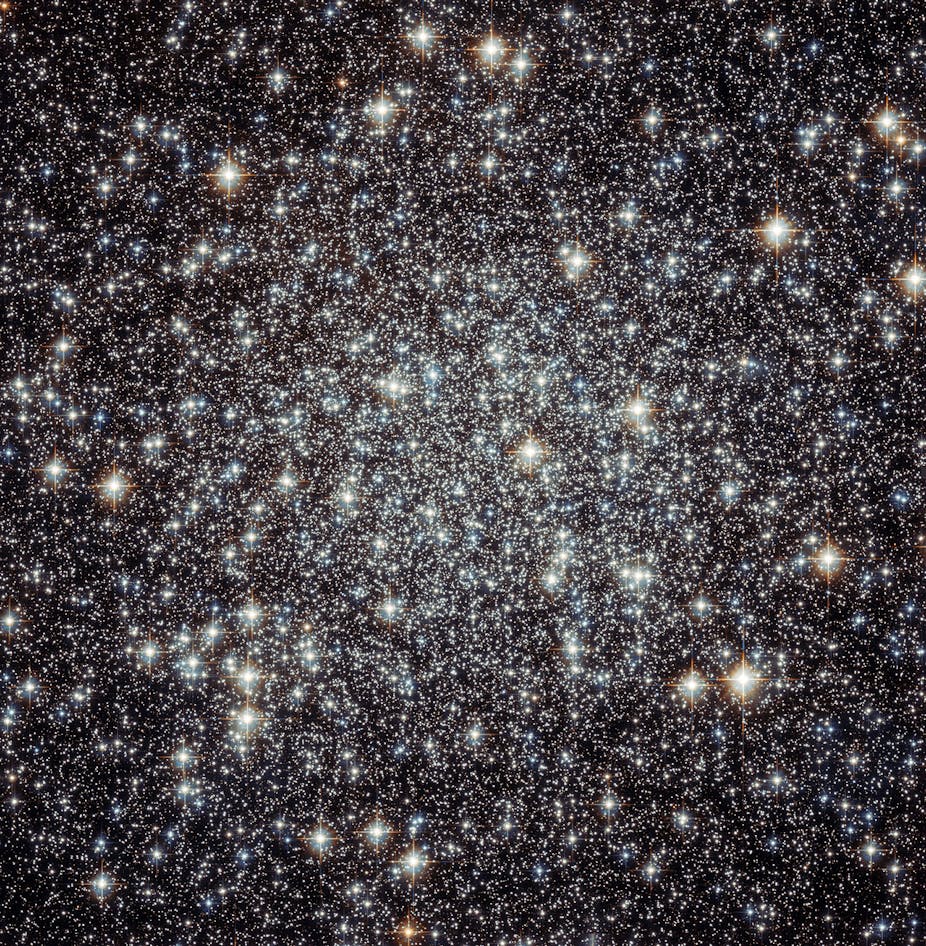The hustle and bustle of daily life is a stark contrast to the tranquility of the night sky.
The stars are the same, year after year. So much so that many of the very names we use for the stars and constellations are thousands of years old. Ancient Greek and Arabic astronomers had almost exactly the same view of the heavens that we have today: the stars do not seem to change.
But this is a lie.
We now know that the night sky is a seething, bubbling tableau. Look up, and unseen by your eye a vast number of stars are erupting, exploding or being torn apart.
How can the universe be so tumultuous, when it seems so peaceful? Because with our limited human vision we see only the tiny brightest tip of what the cosmos has to offer. Look deeper, and violence abounds.
Stars are far from static
A growing number of astronomers now devote their careers to what is known as “time-domain astronomy” – the search for celestial bodies that appear, disappear or change with time. The goal is to catch stars in the very act of brightening or fading, and to use these changes to learn more about the cosmos.
Flashes and flares in the sky usually represent catastrophic releases of energy, under conditions far more extreme than we could ever hope to reproduce in laboratories here on Earth. To see the sky change is to open a window into exotic and fundamental physics that we could never otherwise study.
The catch is that time-domain astronomy is a cosmic guessing game, with seemingly impossible odds stacked against us.
Where to focus our shared sights
The fundamental problem is that we don’t know in advance where the next change in the heavens is going to happen. So even if we look at the sky all the time, chances are we won’t be looking in the right place.
For example, suppose that once a night, somewhere in the universe, a star abruptly ends its life in a colossal supernova explosion. We would very much like to see this happen, but we cannot possibly know which of billions of stars will be the next to go.
Maybe we should just stare through our telescopes, night after night, and hope for the best? Unfortunately, most modern telescopes have tiny fields of view, so it’s almost certain that we will always be looking in the wrong direction. The Hubble Space Telescope, arguably the most powerful telescope ever built, has a field of view that covers just 0.000008 percent of the sky at any one time. Patiently point Hubble in a random direction once every 24 hours, hoping that you’ll see the one supernova in the universe that happened to occur that night, and you’ll average tens of thousands of years before you’re lucky enough to catch one in the act.
Astronomers have thus had to come up with a range of clever solutions, all aimed at dealing with the vastness of the sky, and geared toward finding the needle in the cosmic haystack.
Perhaps unique in all fields of research, astronomy is built on strong partnerships between amateurs and professionals. Thousands of amateurs patrol the skies with their own modest-sized telescopes night after night, looking for anything unusual. With so many eyes on the sky at once, the chances of quickly finding any changes in the heavens are pretty good.

Astronomers have also built new types of telescopes, with spectacular fish-eye lens capabilities to image enormous swaths of the sky at once. For example, the forthcoming Large Synoptic Survey Telescope will utilize a 3,200-megapixel camera to provide a field of view more than 3,000 times larger than that of Hubble. And a new radio telescope, the Murchison Widefield Array, has a view of the sky larger than Hubble’s by a factor of 500,000. While we will still not know exactly where to look to see the next explosion or disruption, the odds are greatly increased when you’re looking through a massively wide-angle lens.
Once an astronomer finds something unexpected in the sky, the most urgent thing is to let everyone else know too, so that they can also study it before it fades away.
Sophisticated electronic alert networks have thus been developed, which allow any registered user to instantly notify everyone else as to what they’ve seen and where to look. The truly dedicated sleep with their phones by their beds, ready to be awakened by an automatic alert calling them to action.
Upon receiving such an alert, astronomers will swing their telescopes to the relevant patch of the sky, eager to capture their own contribution to the aftermath of the event before it fades away. Every day, a global game of “whack-a-mole” takes place as these alerts crisscross the globe and call stargazers to action.

Accumulating fiery findings
What have we learned from time-domain astronomy?
We have seen colossal distant star quakes, releasing more energy than the sun can produce in a quarter of a million years. We have seen stars cry out their final farewell in a flash of light as they fall into the maw of a giant black hole. We have seen invisible noodle-like tubes of gas, drifting in front of galaxies, flaring and distorting their light like a funhouse mirror. And we have borne witness to the birth cries of newborn black holes, formed when a star’s nuclear furnace shuts down and gravity takes over.
The universe is a dynamic, violent, exciting place. We have begun a heady new era, in which the sky changes in real time as we watch with amazement.

